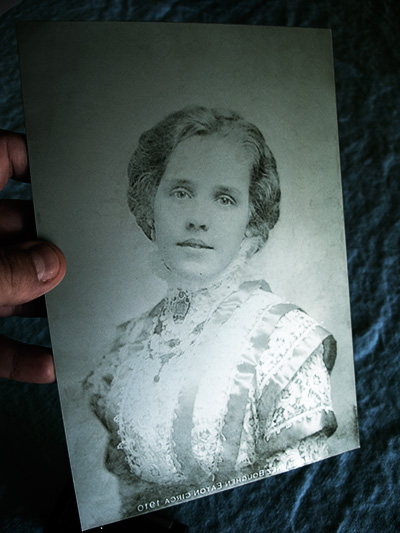


Plate Handling
The edges of your new plate are sharp! For optimal safety, please remember to always sand the back and edges of new plates before use!
Our plates are made with care under a special method that has evolved over many years of research and development in polymer photogravure printmaking. We use a custom, high-resolution aquatint screen and compensation curve to provide an extremely fine grain appearance and maximum tone.
To avoid scratching your plate, we recommend applying ink using a brayer (not a piece of mat board) and wiping it into the plate with a light but progressive grinding motion using three stages of lightly starched tarlatan made into flat pads. The light tarlatan should be soaked in water for 25-30 minutes, completely dried on a clothes drying rack, and pulled apart prior to use to remove any hard parts. Start with the dirtiest tarlatan pad to push the ink deeply into the fine pits of the plate. Continue to wipe with a less dirty pad and perform the final pass with the cleanest. Be increasingly gentle during each stage of wiping and avoid over-wiping. Tissue, palm wiping and/or retroussage as a final pass are also recommended.
Printing Materials Recommendations
Because of the extremely fine aquatint employed, our plates require a professional intaglio press (10" top drum or greater in diameter is recommended) and pressure that is sometimes considerably higher than normal to achieve the full richness and continuous tone they are capable of producing. Prints from our plates should look like photographs when made using good printmaking practices and optimal pressure. They are good for several dozen prints or more before nuances begin to fall off in the highlights. For best results when proofing, Intaglio Editions recommends using Charbonnel Carbon Black ink and Hahnemühle Copperplate or Magnani Revere Silk paper. We've tested dozens of combinations, and these work the best for getting the full tonality and smoothness from your Intaglio Editions plate.
Please remember that polymer plates are water-soluble. The thin layer of oil based ink you use to wipe the plate is generally enough to protect it, however do use prudence. Never spray water directly on the plate. Soaked printmaking paper should be damp, but not glistening wet. Although some people claim to have used water-based inks with polymer successfully, we don't recommend it with Intaglio Editions polymer photogravure plates.
Plate Cleanup, Storage & Recycling
The recommended cleanup method for our plates is to put the plate on clean newsprint and spray it with SOYsolv® II (available from Daniel Smith and other fine art printmaking suppliers). This soy-based solvent is very gentle on the plate's plastic substrate and finer matrix. Rub it carefully into the plate with gloved hands, and then sop it up with clean newsprint. Repeat until most of the ink has been removed from the plate. Run it through the press onto four layers of clean newsprint. Now do a final, light sprinkle with clean mineral spirits, rub it into the plate with a clean, gloved hand, blot with clean newsprint, and run it through press onto four layers of clean newsprint again. Wrap the plate in clean newsprint, seal it in plastic, and store it horizontally in a cool dry place. Our steel-backed plates may be recycled anywhere that accepts scrap steel metal. See our YouTube video above for full instructions.

Visa and Mastercard Accepted
Or call us at (303) 818-5187 or E-mail to discuss your project today.
Find Us on Facebook
|
Follow Us on Instagram.
© 2006-2025 Intaglio Editions, LLC